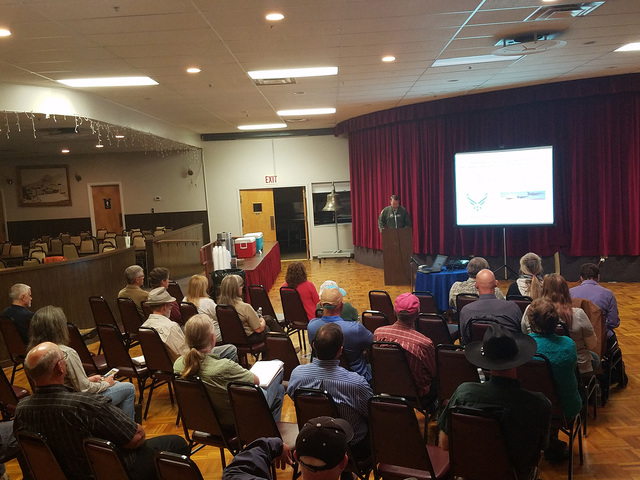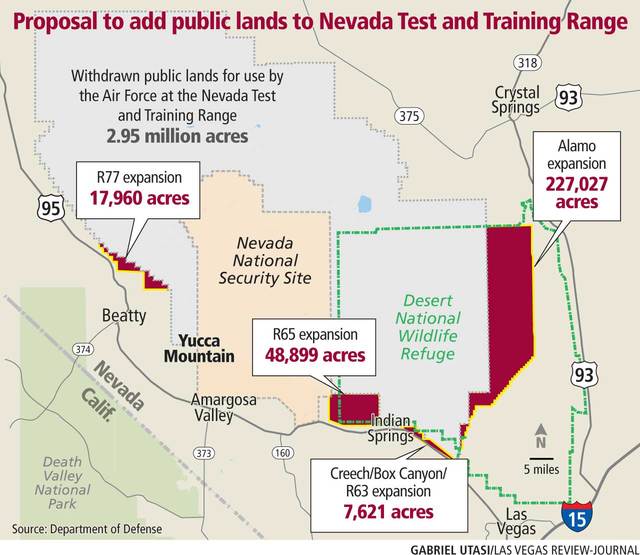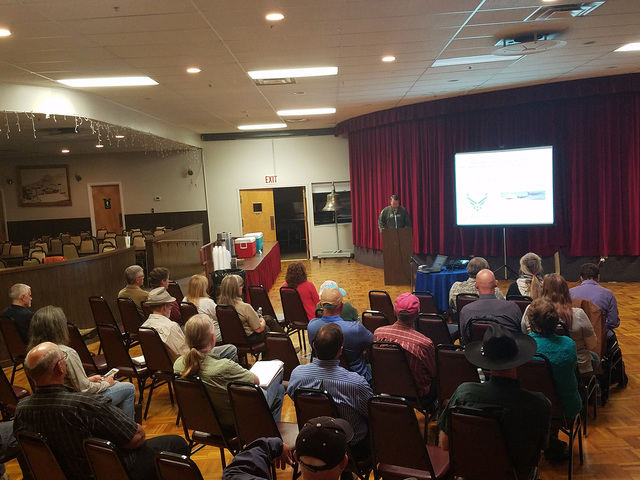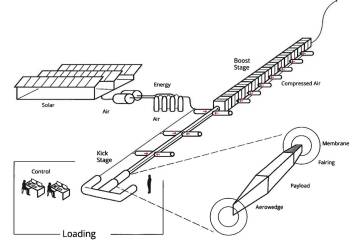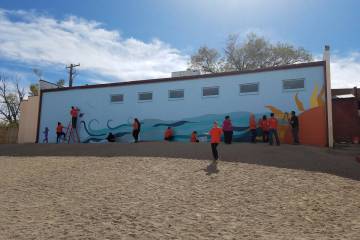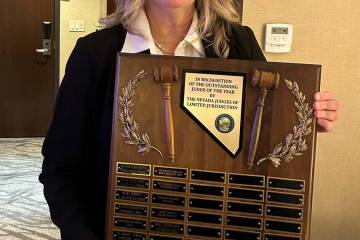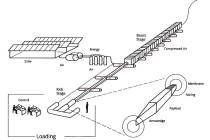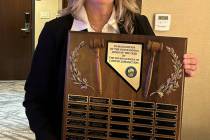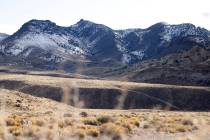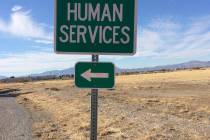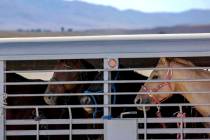Nevada Test Range called ‘critical’ to U.S. military
TONOPAH - Facing persistent enemy threats that include ISIS, Air Force representatives during a Tonopah visit pushed for a plan to expand the Nevada Test and Training Range by more than 300,000 acres of public land.
During an interview with the Times-Bonanza on Oct. 13, an Air Force official cited “the absolute criticality of this area.”
“ISIS, the current situation out there,” said Mike Ackerman, environmental planning project manager for the Air Force.
“All (America military) services have been doing a tremendous amount. But what we have been doing from an Air Force perspective …What we need to be doing with special operations, all of that is happening” at the Nevada Test and Training Range, he said.
The Air Force seeks to renew the use of approximately 2.9 million acres of public land and reserve another 301,507 acres of public land to expand the existing range.
“It is probably the most critical range for the Department of Defense for the current military operations,” Ackerman said. “Counterterrorism and other operations.”
“It is essential for the Air Force and other services to be able to realistically train and test,” Ackerman said during the Tonopah visit.
“Test munitions, test how the aircraft is performing, test the tactics on a large-scale. So dozens and dozens of aircraft testing each other, rehearsing on kind of a large-scale of what it would be like to go against an opposing force.”
The test range, valued at more than $4 billion, can’t be moved, the Air Force said.
But at its current size, “it’s not meeting the needs of being able to realistically come in and change the targets and put in new electronics,” Ackerman said.
That is prompting the range expansion proposal, which was outlined to about 40 people Oct. 13, in the Tonopah Convention Center where public feedback was sought.
Audience members watched a video about the planned expansion, met individually with Air Force representatives to answer questions, received informational packets, viewed large posters detailing the Air Force plan and had the opportunity to provide individual comments to a court reporter.
Similar to Navy expansion but separate
The Air Force proposal is separate from and not connected to a Navy effort to expand into Nye County through the Navy’s $1.4 billion Fallon Range Training Complex.
“It’s completely unrelated, and there’s no connection to it, but you’ll see some of the same needs that I have heard the Navy talk about,” Ackerman said of the Air Force plan.
One of the key elements is gaining more land to be able to train with modernized weapons systems used by U.S. military forces.
“They are no longer dropping munitions or smart bombs from 3,000-4,000 feet,” Ackerman said. “They’ll get shot down. We’re dropping from 35,000 feet and miles away.”
Technology, ‘training wheels’
Improved technology also is prompting the Air Force to seek more space.
“Things have continued to develop and advance in their capabilities, and the enemy is using these same capabilities,” said Col. David Avila, commander of the Nevada Test and Training Range. “Enemy systems are getting better and better.”
“We, as Air Force, realize we’re never going to be able to get the amount of airspace that we’d love to have, which encompasses multiple states,” Avila told the Times-Bonanza.
“What we’ve looked hard at doing is being able to look within the confines of the range,” Avila said. “What are those things that we can affect and adjust to being able to provide a more realistic battle space for our aircraft, aircrew members to be able to counter those threats that are emerging.”
Officials said the additional training space would help ensure the “safety footprint” and account for public safety issues that come with the increased altitude and distance.
“Right now you are having to come in at one-third of the altitude, one-third of the speed with no new targets or no new radar infrastructure,” Ackerman said of current test range training, specifically well south of Tonopah.
“It’s kind of like training with training wheels on,” Ackerman said. “The pilots are telling us, ‘There’s no challenge to this. It isn’t really giving us the benefit.’”
Tonopah area
The test range toward Tonopah is not the focus of the proposed expansion with no changes in airspace and “no real changes in the operational footprint, either,” Ackerman said.
“On the north range, we’re looking potentially around the Beatty area. There’s about 18,000 acres that we’re looking to potentially (obtain) in addition to what was (obtained) 20 years ago.”
Outdoor enthusiasts
The Air Force also is aware of concerns by outdoor enthusiasts about expanding the range, issues that were raised at a recent meeting in Beatty.
“We have heard some concerns and are listening to those concerns,” Ackerman said. “Part of this process is that we have some preliminary alternatives, but how can we shape those better and optimize them. So we are looking at public access concerns for birding, bird watching, (mountain) biking, trail use, all the different concerns that they raised.”
The Air Force plans to take the public feedback and revisit the alternatives, including those involving public recreation.
“We are looking at some mountain biking concepts for some economic development but also some recreation in the Beatty area,” Ackerman said, adding that the Air Force received a development plan while in Beatty.
“We’re going take all this information so we can take a look at how we can be good neighbors, how we can develop a concept for the next 20 years,” he said.
A closer look
In announcing the Air Force’s request Sept. 1, the U.S. Bureau of Land Management said that:
■ The Air Force expansion would also overlap a designated energy transmission corridor in two locations (Beatty and near Tule Springs National Monument), the current Vegas to Reno off-highway race course and proposed mountain bike and hiking trails in the Beatty area.
■ The BLM, the U.S. Fish and Wildlife Service, the U.S. Department of Energy and the Nevada Department of Wildlife will take part in preparation of the environmental analysis.
■ The Air Force will consider existing uses of the expansion area.
■ Of the 301,507 additional acres the Air Force is seeking, about 266,000 acres are managed for desert bighorn sheep by the U.S. Fish and Wildlife Service as part of the Desert National Wildlife Refuge.
Contact reporter David Jacobs at djacobs@tonopahtimes.com


